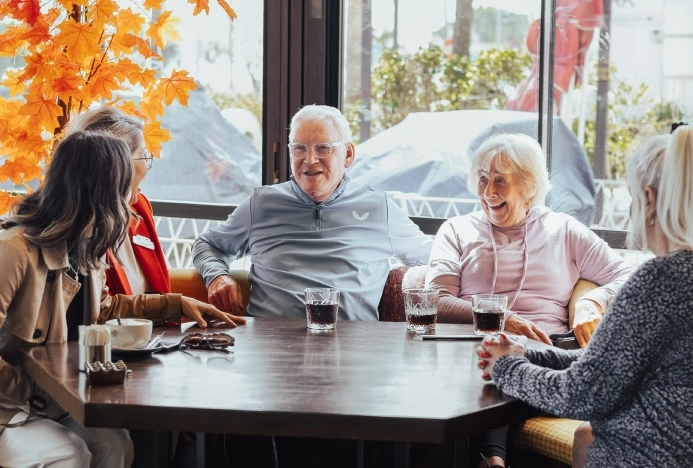Asian blepharoplasty, commonly known as eyelid surgery to look Asian, has emerged as a significant cosmetic procedure within the field of oculofacial plastic surgery. This specialized technique focuses on creating or enhancing the appearance of an epicanthal fold, a distinctive anatomical feature present in approximately 50% of East Asian populations. The procedure has gained considerable popularity not only in Asian countries but increasingly across Western nations, reflecting the complex interplay between cultural beauty standards and personal identity. Research published in the Journal of Plastic and Reconstructive Surgery indicates that the number of these procedures has increased by 34% over the past decade, highlighting its growing relevance in contemporary aesthetic medicine.
Table of Contents
The surgical technique involves precise modification of the upper eyelid anatomy to create what is medically termed a “double eyelid” appearance. This transformation requires expert understanding of ocular structural differences across ethnic groups and meticulous attention to maintaining natural-looking results. The procedure typically takes between one to three hours under local anesthesia, with recovery periods averaging 7-10 days before patients resume normal activities. Patient satisfaction rates consistently exceed 85% according to longitudinal studies, though the decision to pursue eyelid surgery remains deeply personal and often influenced by diverse factors including cultural background, personal aesthetics, and social environment. The psychological impact of such procedures extends beyond physical appearance, often affecting self-perception and confidence in significant ways.
Cultural Aspects of Asian Eye Surgery
The practice of westernization eyelid surgery, also known as double eyelid surgery or Asian blepharoplasty, carries significant cultural implications that extend beyond purely aesthetic considerations. This procedure reflects complex intersections of beauty standards, cultural identity, and social pressures in various Asian societies.
- Cultural beauty standards have evolved significantly over decades, with the single eyelid traditionally celebrated in many East Asian cultures as a mark of ethnic identity. However, increased globalization has introduced Western beauty ideals that often emphasize larger, double-lidded eyes.
- Historical context reveals that oriental eyelid modification procedures gained popularity following World War II, particularly in countries with strong American military presence like South Korea and Japan. This timing correlates with increased Western media influence in these regions.
- Identity politics and authenticity debates surround these procedures, with critics arguing that westernization eyelid surgery represents internalized racism or cultural erasure. Supporters counter that personal choice and evolving beauty standards are valid expressions of individual autonomy.
- Regional variations in attitudes exist across different Asian countries. South Korea has embraced cosmetic procedures as culturally acceptable enhancements, while Japan and China demonstrate more complex and sometimes contradictory perspectives on the practice.
- Generational differences are evident in how these procedures are perceived, with younger generations often viewing them as standard beauty enhancements rather than attempts at westernization.
- Media representation significantly influences beauty standards, with K-pop, J-pop, and Asian cinema stars often serving as beauty ideals. Many celebrities who have undergone oriental eyelid modification become new reference points for beauty.
- Academic research from anthropological and sociological perspectives has documented how these procedures reflect broader patterns of cultural exchange, hybridity, and the complex dynamics of globalization in Asian societies.
- Economic factors play a role in accessibility and prevalence of these procedures, with more developed Asian economies typically having higher rates of cosmetic enhancement procedures, including those focused on eyelid modification.
Asian Eyelid Surgery Procedure and Treatment Options
Asian eyelid surgery, technically known as east Asian blepharoplasty, is a specialized procedure designed to create or enhance the upper eyelid crease in individuals of Asian descent. This surgical intervention addresses the anatomical differences typically found in about 50% of East Asians who naturally have a single eyelid or monolid appearance. The double eyelid procedure has become one of the most commonly performed cosmetic surgeries in Asia and among Asian populations worldwide, with various techniques developed to achieve natural-looking results.
Asian blepharoplasty techniques vary based on patient anatomy, desired outcome, and surgeon preference. The following methods represent the primary approaches used in clinical practice:
- Suture Method (Non-incisional): Creates a crease using strategic stitches without tissue removal, resulting in minimal scarring and shorter recovery time.
- Partial Incision Method: Involves smaller incisions than the full technique, balancing minimal invasiveness with moderate permanence.
- Full Incision Method: The most comprehensive approach involving complete incision along the planned crease line, removal of excess tissue, and permanent restructuring.
- DST (Double Suture and Twist) Method: A specialized non-incisional technique that creates a natural-looking fold through a unique suturing pattern.
- Epicanthoplasty: Often performed alongside double eyelid surgery to address the inner corner of the eye for a more comprehensive transformation.
The asian eyelid surgery procedure follows a standardized sequence regardless of the specific technique chosen:
- Pre-surgical marking in the upright position to establish the ideal crease location
- Administration of local anesthesia with sedation (general anesthesia for more complex cases)
- Surgical intervention based on the selected technique
- Meticulous closure with fine sutures
- Application of specialized tape for crease formation support during healing
The ethnic blepharoplasty approach must account for distinct anatomical considerations unique to Asian eyelids, including differences in orbital fat, levator muscle attachment, and skin thickness. Surgeons specializing in this procedure understand that what is the asian eyelid correction fundamentally involves structural modification rather than simple skin removal.
| Technique | Average Cost Range (USD) | Permanence | Recovery Time |
|---|---|---|---|
| Non-incisional | $2,000-$3,500 | Semi-permanent | 5-7 days |
| Partial Incision | $3,000-$4,500 | Long-lasting | 7-10 days |
| Full Incision | $3,500-$6,000 | Permanent | 10-14 days |
| Combined with Epicanthoplasty | $4,500-$8,000 | Permanent | 14-21 days |
The asian blepharoplasty cost varies significantly based on geographic location, surgeon expertise, facility fees, and the complexity of the individual case. Urban centers with high concentrations of experienced surgeons typically command premium pricing, while costs may be substantially lower in certain international locations.
Many patients inquire whether asian eyelid surgery is permanent, and the answer depends primarily on the technique employed. The full incision method offers the most lasting results due to the structural changes created, while non-incisional techniques may require maintenance over time. Factors influencing longevity include skin elasticity, age, and postoperative care compliance.
Understanding what is asian eyelid surgery involves recognizing it as a highly technical procedure requiring specialized knowledge of both surgical techniques and ethnic anatomical variations. The ideal approach for each patient emerges from careful consideration of facial features, desired outcome, recovery tolerance, and long-term maintenance preferences. Modern east asian cosmetic eye procedures have evolved to emphasize natural-appearing results that enhance without fundamentally altering ethnic identity. Blepharoplasty Anesthesia Recovery is an important consideration for those seeking eyelid surgery to look Asian, as it can impact both the downtime and overall experience. It’s essential for patients to communicate their goals clearly with their surgeon to ensure satisfactory outcomes.
Results and Recovery of Asian Eyelid Surgery
The recovery process following Asian eyelid surgery follows a predictable timeline, allowing patients to prepare accordingly for their healing journey and anticipate the final results of their procedure.
- First 24-48 hours: Significant swelling and bruising are common immediately after Asian blepharoplasty. Cold compresses can help reduce swelling during this critical period.
- Days 3-7: Swelling begins to subside gradually, though the eyelids may still appear puffy. Most patients can return to light activities while avoiding strenuous exercise.
- Days 7-10: Stitches are typically removed if non-dissolving sutures were used. Many patients feel comfortable returning to work and social activities.
- Weeks 2-3: Bruising should be mostly resolved, though mild swelling may persist. The initial results of double eyelid surgery become more apparent.
- Weeks 4-6: Most residual swelling subsides, and patients begin to see more natural looking Asian eyelid surgery results.
- Months 3-6: Final results fully manifest as all swelling resolves completely and tissues settle.
The typical Asian eyelid surgery recovery time varies from person to person, but most patients experience a full recovery within 1-3 months. Factors affecting recovery include individual healing abilities, surgical technique, and adherence to post-operative care instructions.
Expected outcomes and post-procedure appearances include:
- Defined upper eyelid crease: The most visible result of double eyelid surgery before and after comparisons is the creation of a natural-looking supratarsal fold.
- Reduced puffiness: Removal of excess fat can result in a less puffy appearance, evident in Asian blepharoplasty before and after photos.
- Improved symmetry: Any pre-existing asymmetry between the eyes can be significantly improved.
- Preserved ethnic features: Modern techniques focus on maintaining the patient’s ethnic identity while enhancing their natural features.
- Minimal scarring: Incision lines typically heal well and become nearly invisible within months.
Post-operative care plays a crucial role in achieving optimal Asian eyelid surgery before and after results. Patients should sleep with their head elevated for the first week and avoid rubbing their eyes. Sun protection is essential as UV exposure can affect scarring and healing.
Most patients report high satisfaction rates with their results, particularly when they’ve chosen surgeons experienced in creating natural looking Asian eyelid surgery outcomes. Complete Asian blepharoplasty recovery culminates in a refreshed appearance that maintains harmony with the patient’s facial features while addressing their specific aesthetic concerns.
Finding Asian Eyelid Surgery Specialists
Selecting a qualified specialist for Asian eyelid surgery requires thorough research and careful consideration. The expertise of your chosen surgeon directly impacts both aesthetic outcomes and safety.
Finding the best surgeons for Asian eyelid surgery involves evaluating their specialized training and experience with Asian facial anatomy. When searching for Asian eyelid surgery near me, consider these essential factors:
- Board certification in oculoplastic or facial plastic surgery
- Specialized training in Asian blepharoplasty techniques
- Portfolio of before/after photos showing consistent results
- Patient reviews and testimonials from Asian patients
- Consultation approach that respects your aesthetic goals
- Years of experience performing double eyelid procedures
For those seeking treatment in specific locations, this table provides guidance on finding qualified specialists:
| Location | Finding Specialists | Recommended Credentials |
|---|---|---|
| London | Research double eyelid surgery London clinics | UK General Medical Council registration |
| UK (General) | Search for Asian eyelid surgery UK providers | Fellowship in oculoplastic surgery |
| Major Cities | Look for best Asian blepharoplasty surgeon reviews | Minimum 5+ years specialized experience |
This table highlights the importance of location-specific research when seeking qualified surgeons. London offers several specialized clinics with surgeons trained specifically in Asian blepharoplasty UK techniques.
Consultation quality serves as a crucial indicator of surgical expertise. A thorough consultation should include detailed discussions about anatomical considerations, precise measurements, and realistic expectations. The best surgeons for Asian eyelid surgery typically allocate sufficient time to understand your unique facial structure.
Remember that geographic proximity should not outweigh expertise—traveling to see a highly specialized surgeon often proves worthwhile for optimal results. Many patients find that researching both local options and specialists in major metropolitan areas provides the most comprehensive selection of qualified surgeons.



